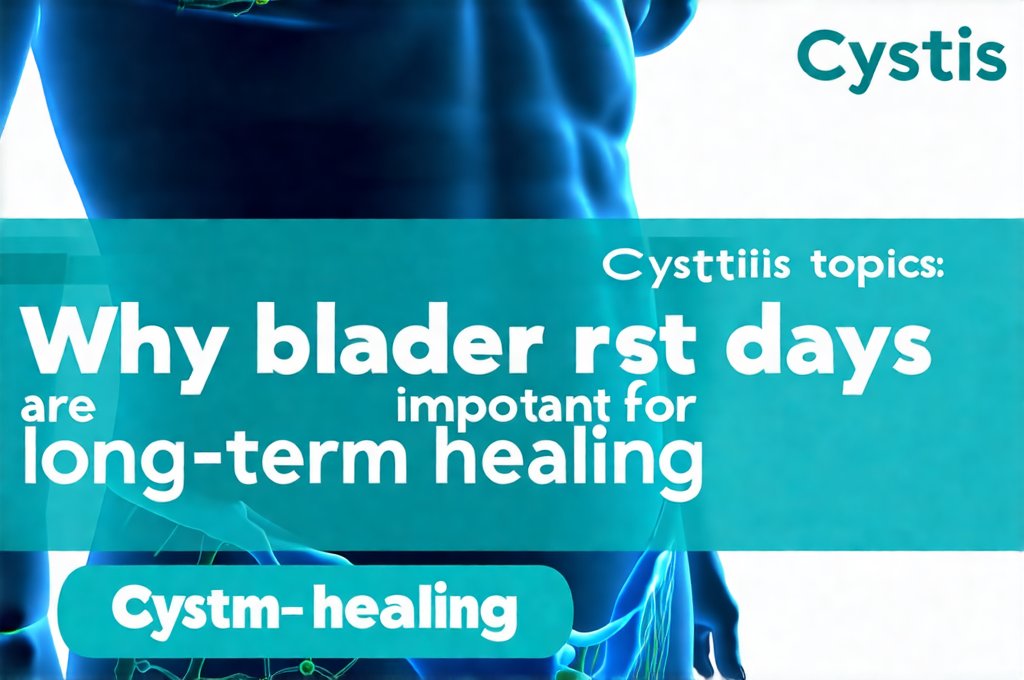Bladder rest days are often overlooked in discussions about urinary health, yet they represent a cornerstone of long-term healing for individuals dealing with conditions ranging from interstitial cystitis (IC) to overactive bladder (OAB), recurrent UTIs, and even post-surgical recovery. Many approaches to bladder health focus on symptom management – medications to calm urgency, exercises to strengthen pelvic floor muscles – but these often address the effects of a stressed bladder without addressing the underlying cause: chronic irritation and inflammation. Simply put, if you constantly challenge an injured organ, it has little opportunity to recover. A period of reduced stress allows the delicate tissues within the bladder to heal, reducing inflammation and potentially altering pain pathways over time.
The concept isn’t about ignoring your body’s signals entirely; it’s about strategically managing them. It requires a shift in mindset – from one focused on ‘holding out as long as possible’ or responding immediately to every urge, to one that prioritizes planned voiding and reducing unnecessary bladder irritation. This isn’t necessarily easy, requiring discipline and often involving lifestyle adjustments, but the potential benefits for long-term urinary health are significant. Understanding why these rest days matter, how to implement them effectively, and what other factors support bladder healing is crucial for anyone seeking lasting relief from chronic bladder issues. If you’re concerned about increased UTIs, especially during warmer months, consider reading worse seasons to learn more.
Understanding the Bladder’s Healing Process
The bladder isn’t a static organ; it’s remarkably adaptable. However, constant irritation – whether from acidic foods, caffeine, frequent holding of urine, or inflammation – leads to changes in its lining and can hypersensitize nerve endings. This creates a vicious cycle: irritation causes pain, pain leads to anxiety about voiding, which then causes more frequent trips to the bathroom, further irritating the bladder. A key component of bladder rest days is breaking this cycle. By reducing the frequency of voiding and minimizing irritants, we give the bladder lining time to repair itself. Think of it like allowing a bruise to heal – you wouldn’t keep bumping into something after injuring yourself.
The healing process involves more than just tissue regeneration. Chronic inflammation can alter the way your brain perceives signals from the bladder, leading to heightened sensitivity and pain even with minimal or no actual damage. Bladder rest days, combined with other therapies like pelvic floor physical therapy and mindfulness techniques, can help “retrain” the nervous system, reducing this hypersensitivity over time. This neurological component is often underestimated but plays a significant role in chronic bladder conditions. Furthermore, a rested bladder is better equipped to function optimally, leading to improved capacity and reduced urgency. Are you unsure certain foods might be contributing to your issues?
- Reduced inflammation within the bladder wall
- Decreased nerve sensitization and pain perception
- Improved bladder capacity and elasticity
- A break from the cycle of frequent voiding and anxiety
Implementing Bladder Rest Days: A Practical Guide
Implementing bladder rest days isn’t a one-size-fits-all approach. The specific protocol will vary depending on individual needs, underlying conditions, and guidance from a healthcare professional. However, the core principle remains consistent: planned voiding at set intervals, rather than responding to every urge. Start by establishing a baseline – track your current voiding patterns for a few days to understand how often you’re going to the bathroom. Then, gradually increase the time between voids, even if it means experiencing some mild urgency initially.
A typical starting point might be voiding every two hours during waking hours and once at night (if necessary), regardless of whether or not you feel a strong urge. This requires discipline, but remember that resisting the urge isn’t about suffering; it’s about retraining your bladder. It is also important to identify and eliminate potential irritants during this time – caffeine, alcohol, acidic foods, spicy foods, artificial sweeteners, and carbonated beverages are common culprits. Hydration is essential, but focus on water rather than irritating fluids. Remember that consistency is key. Bladder rest days are most effective when practiced consistently over a period of weeks or months, allowing the bladder to gradually heal and adapt. You might also want to explore light meals to support your dietary changes.
The Role of Pelvic Floor Physical Therapy
Pelvic floor physical therapy (PFPT) complements bladder rest days beautifully. Often, individuals with chronic bladder issues have either an overly tight or weak pelvic floor, contributing to urgency, frequency, and pain. PFPT aims to restore proper muscle function, improving bladder support and reducing pressure on the bladder. A trained therapist can assess your pelvic floor muscles and develop a tailored exercise program to address any imbalances. This might include:
- Relaxation techniques to release tension in the pelvic floor muscles
- Strengthening exercises for weak muscles
- Coordination exercises to improve muscle function
- Biofeedback to help you become more aware of your pelvic floor muscles
PFPT isn’t just about strengthening; it’s about learning to control and coordinate these muscles effectively. When combined with bladder rest days, PFPT can significantly enhance healing and improve long-term urinary health. It’s important to find a therapist specializing in pelvic health, as they have the expertise to address specific conditions related to the bladder and pelvic floor.
Dietary Considerations for Bladder Health
Diet plays a crucial role in bladder irritation. Certain foods and beverages are known irritants, exacerbating symptoms of urgency, frequency, and pain. Identifying and eliminating these triggers is an essential part of a comprehensive approach to bladder healing. Common culprits include:
- Caffeine (coffee, tea, soda)
- Alcohol
- Citrus fruits and juices
- Tomatoes and tomato-based products
- Spicy foods
- Artificial sweeteners
- Carbonated beverages
It’s important to note that trigger foods vary from person to person. Keeping a food diary can help you identify which specific foods worsen your symptoms. Once identified, gradually eliminate these foods from your diet for several weeks and then reintroduce them one at a time to see if they cause a reaction. Focus on incorporating anti-inflammatory foods into your diet, such as:
- Water-rich fruits and vegetables (cucumber, watermelon, celery)
- Fatty fish rich in omega-3 fatty acids
- Leafy green vegetables
- Whole grains
Mindfulness and Stress Management
Chronic bladder issues can be incredibly stressful, and stress itself can worsen symptoms. The link between the mind and body is strong, and learning to manage stress effectively can significantly improve bladder health. Mindfulness techniques, such as meditation and deep breathing exercises, can help reduce anxiety and calm the nervous system. This, in turn, can decrease urgency and frequency.
Stress management isn’t just about relaxation; it’s about developing coping mechanisms to deal with challenging situations without exacerbating your symptoms. Techniques like yoga, tai chi, and spending time in nature can also be beneficial. Remember that bladder rest days are often more successful when combined with strategies to manage stress and anxiety. By addressing the emotional component of chronic bladder issues, you can create a holistic approach to healing.





















